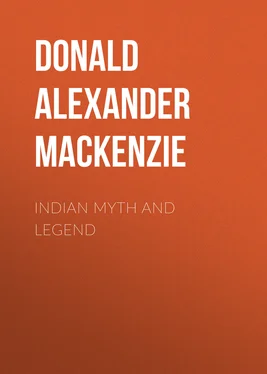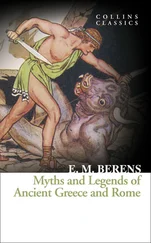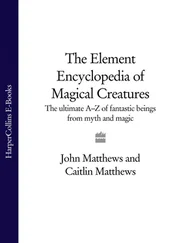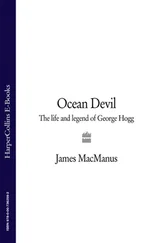Donald Alexander Mackenzie - Indian Myth and Legend
Здесь есть возможность читать онлайн «Donald Alexander Mackenzie - Indian Myth and Legend» — ознакомительный отрывок электронной книги совершенно бесплатно, а после прочтения отрывка купить полную версию. В некоторых случаях можно слушать аудио, скачать через торрент в формате fb2 и присутствует краткое содержание. Жанр: foreign_prose, foreign_religion, Философия, Мифы. Легенды. Эпос, foreign_psychology, foreign_antique, на английском языке. Описание произведения, (предисловие) а так же отзывы посетителей доступны на портале библиотеки ЛибКат.
- Название:Indian Myth and Legend
- Автор:
- Жанр:
- Год:неизвестен
- ISBN:нет данных
- Рейтинг книги:4 / 5. Голосов: 1
-
Избранное:Добавить в избранное
- Отзывы:
-
Ваша оценка:
- 80
- 1
- 2
- 3
- 4
- 5
Indian Myth and Legend: краткое содержание, описание и аннотация
Предлагаем к чтению аннотацию, описание, краткое содержание или предисловие (зависит от того, что написал сам автор книги «Indian Myth and Legend»). Если вы не нашли необходимую информацию о книге — напишите в комментариях, мы постараемся отыскать её.
Indian Myth and Legend — читать онлайн ознакомительный отрывок
Ниже представлен текст книги, разбитый по страницам. Система сохранения места последней прочитанной страницы, позволяет с удобством читать онлайн бесплатно книгу «Indian Myth and Legend», без необходимости каждый раз заново искать на чём Вы остановились. Поставьте закладку, и сможете в любой момент перейти на страницу, на которой закончили чтение.
Интервал:
Закладка:
Max Müller, in his closing years, faced this aspect of the problem frankly and courageously. “Aryas”, he wrote, “are those who speak Aryan languages, whatever their colour, whatever their blood. In calling them Aryas we predicate nothing of them except that the grammar of their language is Aryan.... I have declared again and again that if I say Aryas, I mean neither blood, nor bones, nor hair, nor skull; I mean simply those who speak an Aryan language. The same applies to Hindus, Greeks, Romans, Germans, Celts, and Slavs. When I speak of these I commit myself to no anatomical characteristics. The blue-eyed and fair-haired Scandinavians may have been conquerors or conquered, they may have adopted the language of their darker lords or their subjects, or vice versa. I assert nothing beyond their language when I call them Hindus, Greeks, Romans, Germans, Celts, and Slavs, and in that sense, and in that sense only, do I say that even the blackest Hindus represent an earlier stage of Aryan speech and thought than the fairest Scandinavians.... To me an ethnologist who speaks of an Aryan race, Aryan blood, Aryan eyes and hair, is as great a sinner as a linguist who speaks of a dolichocephalic dictionary or a brachycephalic grammar.” 5 5 Biographies of Words and the Home of the Aryas , pp. 120 and 245.
Aryan, however, has been found to be a convenient term, and even ethnologists do not scorn its use, although it has been applied “in a confusing variety of signification by different philologists”. One application of it is to the language group comprising Sanskrit, Persian, Afghan, &c. Some still prefer it to “Indo-European”, which has found rivals in “Afro-European”, among those who connect the Aryan languages with North Africa, and “Afro-Eurasian”, which may be regarded as universal in its racial application, especially if we accept Darwin's theory that the Garden of Eden was located somewhere in Africa. 6 6 The Descent of Man , Charles Darwin, chap. vi, p. 155 (1889 ed.), and The Ancient Egyptians , G. Elliot Smith, pp. 63, 64 (1911).
We may think of the Aryans as we do of the British when that term is used to include the peoples embraced by the British Empire.
In India the Aryans were from late Vedic times divided into four castes—Brahmans (priests), Kshatriyas (kings and warriors), Vaisyas (traders, &c.), and Sudras (aborigines).
Caste (Varna) signifies “colour”, but it is not certain whether the reference is to be given a physical or mythological application. The first three castes were Aryans, the fairest people; the fourth caste, that comprising the dark-skinned aborigines, was non-Aryan. “Arya”, however, was not always used in the sense that we have been accustomed to apply “Aryo-Indian”. In one of the sacred books of the ancient people it is stated: “The colour of the Brahmans was white; that of the Kshatriyas red; that of the Vaisyas yellow; and that of the Sudras black”. 7 7 Muir's Original Sanskrit Texts , vol. 1, p. 140.
This colour reference connects “caste” with the doctrine of yugas, or ages of the universe ( Chapter VI Конец ознакомительного фрагмента. Текст предоставлен ООО «ЛитРес». Прочитайте эту книгу целиком, купив полную легальную версию на ЛитРес. Безопасно оплатить книгу можно банковской картой Visa, MasterCard, Maestro, со счета мобильного телефона, с платежного терминала, в салоне МТС или Связной, через PayPal, WebMoney, Яндекс.Деньги, QIWI Кошелек, бонусными картами или другим удобным Вам способом.
).
Risley, dealing with “the leading castes and tribes in Northern India, from the Bay of Bengal to the frontiers of Afghanistan”, concludes from the data obtained from census returns, that we are able “to distinguish two extreme types of feature and physique, which may be provisionally described as Aryan and Dravidian. A third type, which in some respects may be looked upon as intermediate between these two, while in other, and perhaps the most important, points it can hardly be deemed Indian at all, is found along the northern and eastern borders of Bengal. The most prominent characters are a relatively short (brachycephalic) head, a broad face, a short, wide nose, very low in the bridge, and in extreme cases almost bridgeless; high and projecting cheekbones and eyelids, peculiarly formed so as to give the impression that the eyes are obliquely set in the head.... This type … may be conveniently described as Mongoloid....” 8 8 The Tribes and Castes of Bengal , H. H. Risley, vol. 1, xxxi.
According to Risley, the Aryan type is dolichocephalic (long-headed), “with straight, finely-cut (lepto-rhine) nose, a long, symmetrical narrow face, a well-developed forehead, regular features, and a high facial angle”. The stature is “fairly high”, and the body is “well proportioned, and slender rather than massive”. The complexion is “a very light transparent brown—‘wheat coloured’ is the common vernacular description—noticeably fairer than the mass of the population”.
The Dravidian head, the same authority states, “usually inclines to be dolichocephalic”, but “all other characters present a marked contrast to the Aryan. The nose is thick and broad, and the formula expressing its proportionate dimensions is higher than in any known race, except the Negro. The facial angle is comparatively low; the lips are thick; the face wide and fleshy; the features coarse and irregular.” The stature is lower than that of the Aryan type: “the figure is squat and the limbs sturdy. The colour of the skin varies from very dark brown to a shade closely approaching black.... Between these extreme types”, adds Risley, “we find a large number of intermediate groups.” 9 9 ibid. xxxii-xxxiii.
Of late years ethnologists have inclined to regard the lower types represented by hill and jungle tribes, the Veddas of Ceylon, &c., as pre-Dravidians. The brunet and long-headed Dravidians may have entered India long before the Aryans: they resemble closely the Brahui of Baluchistan and the Man-tse of China.
India is thus mainly long-headed (dolichocephalic). We have already seen, however, that in northern and eastern Bengal there are traces of an infusion of Mongolian “broad heads”; another brachycephalic element is pronounced in western India, but it is not Mongolian; possibly we have here evidences of a settlement of Alpine stock. According to Risley, these western broad heads are the descendants of invading Scythians, 10 10 The People of India , H. H. Risley, p. 59.
but this theory is not generally accepted.
The Eur-Asian Alpine race of broad heads are a mountain people distributed from Hindu Kush westward to Brittany. On the land bridge of Asia Minor they are represented by the Armenians. Their eastern prehistoric migrations is by some ethnologists believed to be marked by the Ainus of Japan. They are mostly a grey-eyed folk, with dark hair and abundant moustache and beard, as contrasted with the Mongols, whose facial hair is scanty. There are short and long varieties of Alpine stock, and its representatives are usually sturdy and muscular. In Europe these broad-headed invaders overlaid a long-headed brunet population, as the early graves show, but in the process of time the broad heads have again retreated mainly to their immemorial upland habitat. At the present day the Alpine race separates the long-headed fair northern race from what is known as the long-headed dark Mediterranean race of the south.
Читать дальшеИнтервал:
Закладка:
Похожие книги на «Indian Myth and Legend»
Представляем Вашему вниманию похожие книги на «Indian Myth and Legend» списком для выбора. Мы отобрали схожую по названию и смыслу литературу в надежде предоставить читателям больше вариантов отыскать новые, интересные, ещё непрочитанные произведения.
Обсуждение, отзывы о книге «Indian Myth and Legend» и просто собственные мнения читателей. Оставьте ваши комментарии, напишите, что Вы думаете о произведении, его смысле или главных героях. Укажите что конкретно понравилось, а что нет, и почему Вы так считаете.












